Motorcycle Investor mag
Subscribe
to our free email news
Brit benchmark
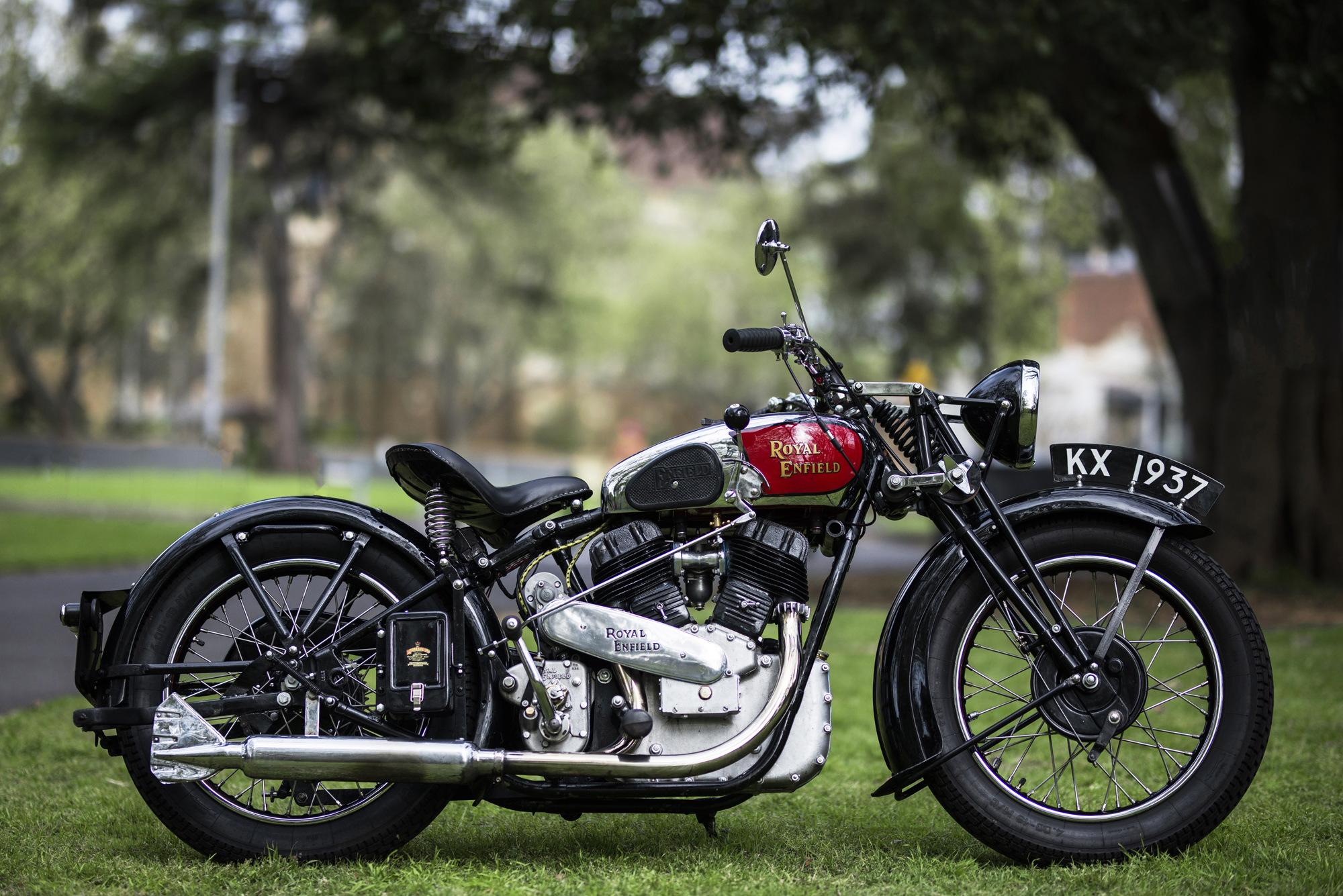
1937 Royal Enfield Model KX
Rare, fast, and very desirable, Royal Enfield's
premium 1140 V-twin of the 1930s is still a great ride
(Feb 2024, Guy 'Guido' Allen, pics by Aaron Puls & GA)
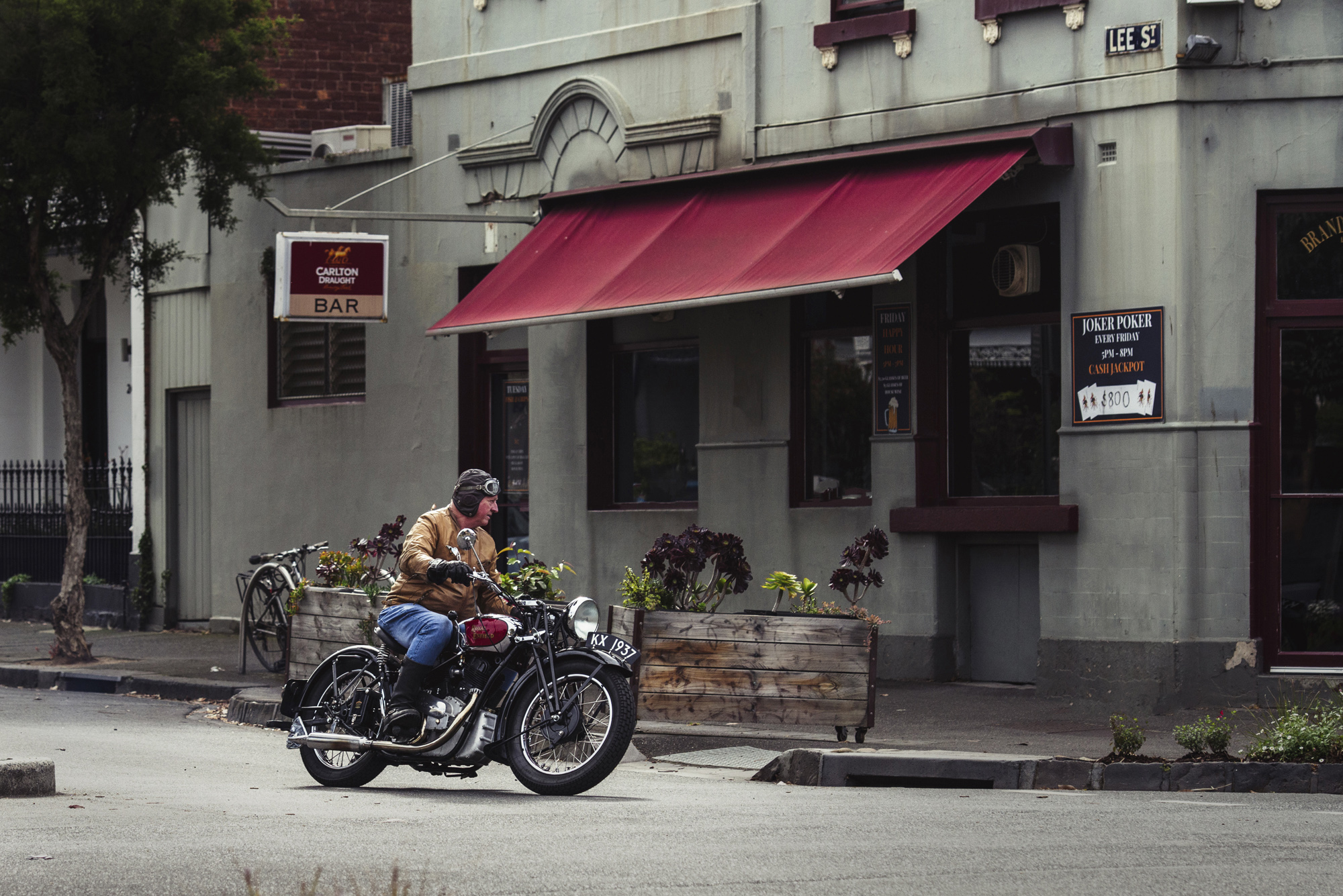
Stumbling into owner Phillip
White's shed, you're confronted with a long, low and
elegant Brit V-twin, the lines of which are unmistakably
1930s Art Deco. That in itself is reason enough to visit.
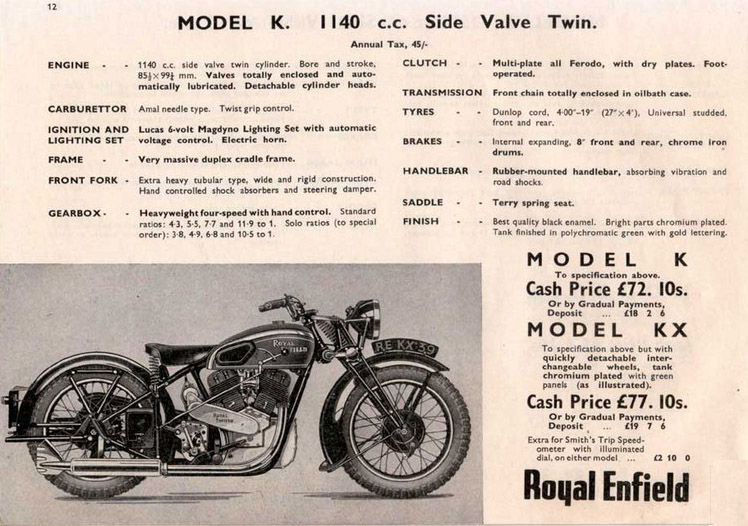
By Phillip's reckoning, it's one of
around 70 of this series surviving world-wide, and one of
a batch of just three KX imported into Australia by a
Brisbane dealer when new. The upmarket KX, by the
way, was distinguished from the K by more elaborate finish
that incorporated chrome panels, and interchangeable
wheels.
Why so rare? They cost a bomb when new
and reached their zenith moments before the outbreak of
World War II. When hostilities ceased, the British home
market went through a long period of austerity. That in
turn meant Royal Enfield wasn't in a position to fund the
development of a new generation of an elite platform.
"These vehicles were designed at the very
twilight of the era of the side-valve V-twin," Phillip
explains. "They have something going for them that earlier
side-valves don't, which is they are a complete design.
They're not a bunch of parts traveling in close formation.
And they're not a boring hack – they were designed
to be pursuit bikes.
"They were timed at 85mph (140km/h) when
new, though obviously it's happier at 55mph (90km/h). But
it's freeway capable, as you're about to find out. Ride it
like you stole it."
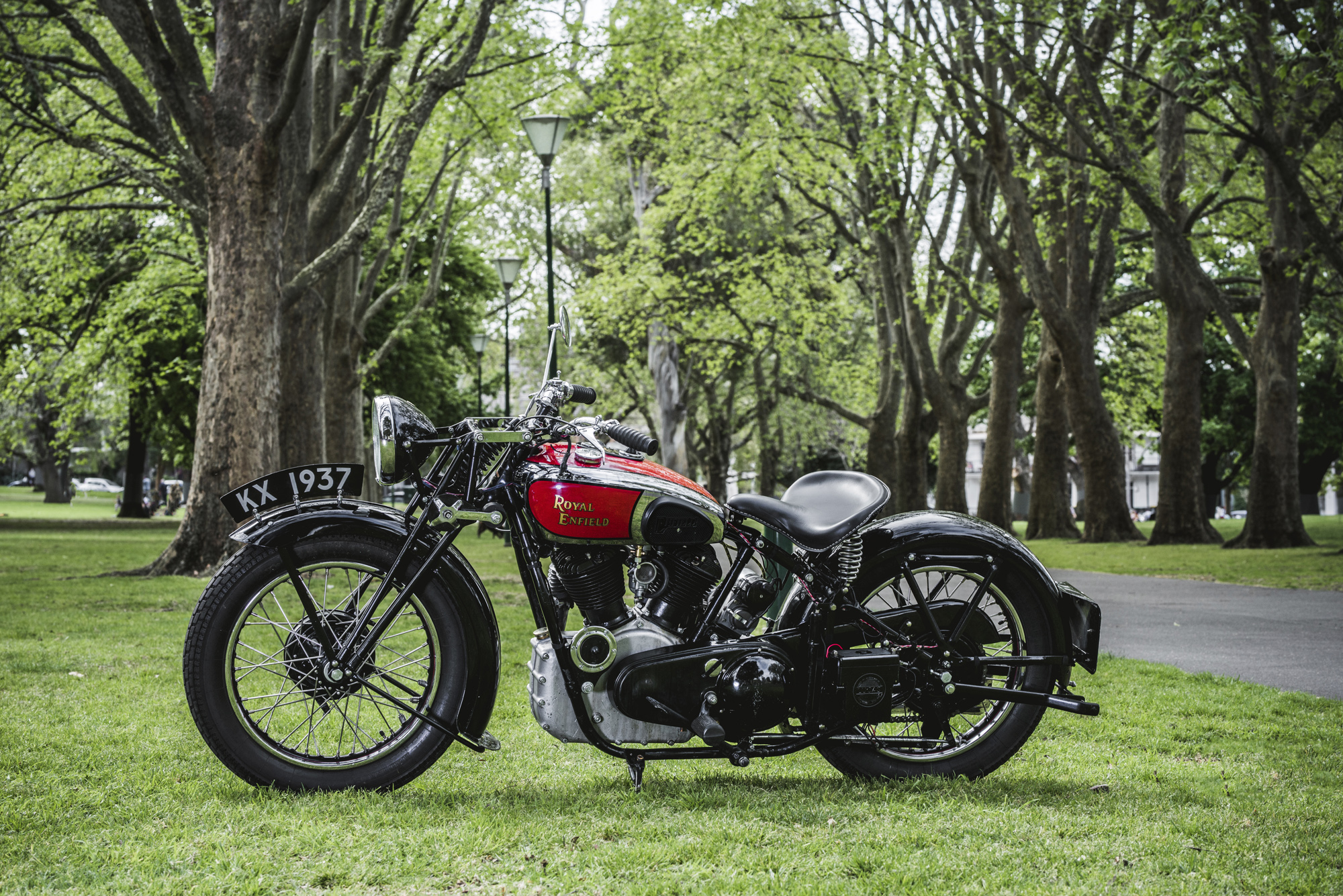
If you take the time to go over the
machine, you can see what Phillip means by a complete
design. Rather than buy a proprietary engine from JAP or
the like, Royal Enfield went to the trouble and expense of
drafting the powerplant from scratch.
Displacing 1140cc, it's a 50-degree
dry-sump V-twin running 5:1 compression. The engine cases
incorporate a giant 8-pint (4.5lt) oil tank at the front,
which aids cooling, and somewhere in the architecture are
four oil pumps. It has no oil rings – it smokes on
start-up but clears soon enough.
The transmission is four-speed with hand
change and the option of foot- or hand-operated clutch.
This machine originally came with a foot clutch but
Phillip has since converted it to a left-hand lever. The
hand-shifter remains on the right.
Phillip points out the inherent strength
incorporated into the chassis, including the frame
and forks. While the front suspension looks like a
set of Bramptons, they are in fact Enfield's own more
robust design. Phillip is a fan of them, saying, "I once
hit a metre-wide down-to-the-dirt memorial to our Premier
(pothole) while doing over 80km/h and immediately assumed
I was toast. The old monster just crashed into the hole
and out again with nary a shake of its elderly head!"
The rear end is a hardtail, with a
well-suspended rider seat. Braking is by 8-inch mechanical
drums at both ends.
The controls are straight-forward for the
period and include a manual retard/advance lever for the
ignition.
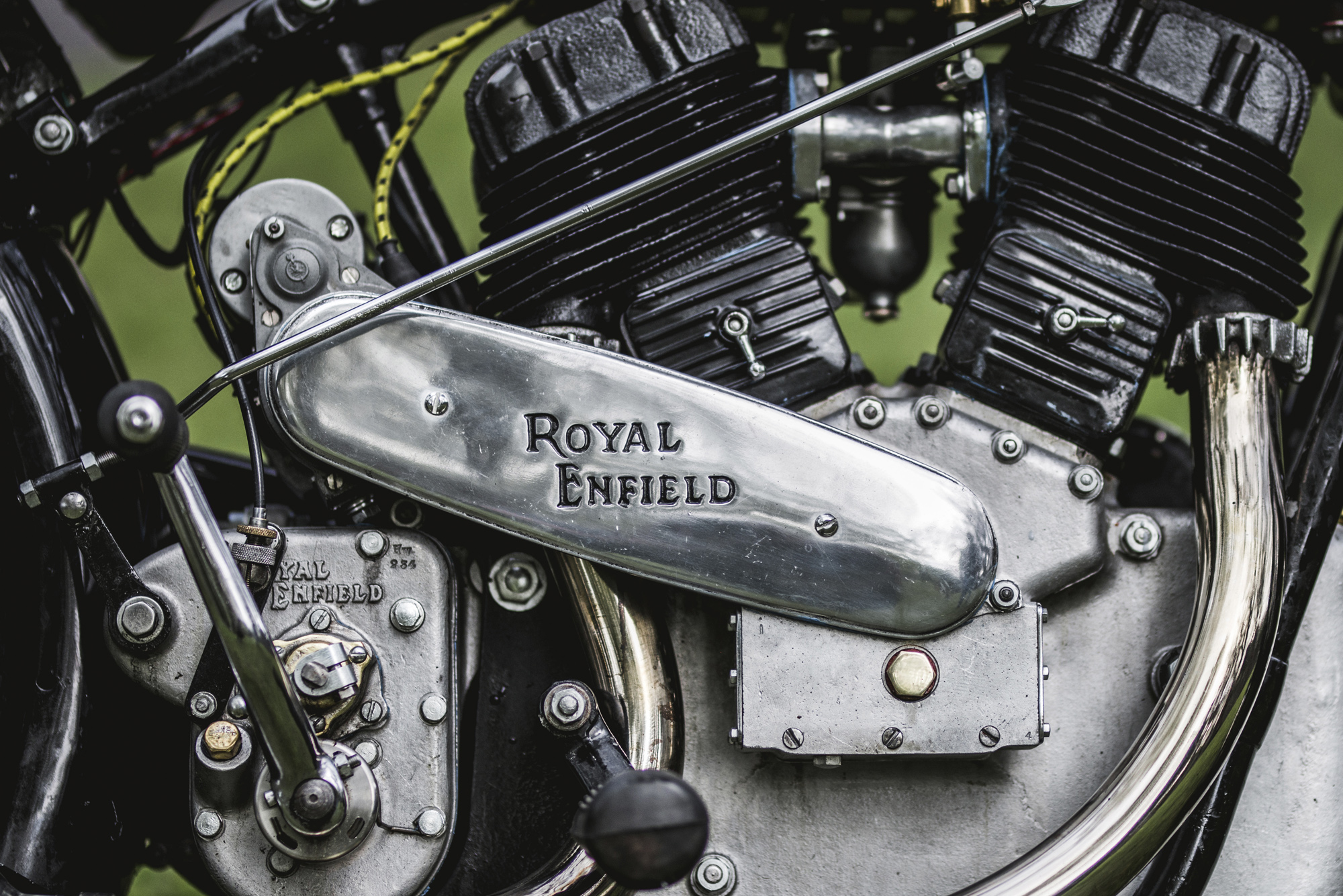
I'll admit to some trepidation at the
idea taking this thing out in Melbourne inner city traffic
and then on to the nearby freeway, knowing how much effort
Phillip had sunk into the restoration. However he promised
muggins would be surprised at how easy it would be to
handle. And he was right. Compared to something like the
1947 Indian that was in the shed a while ago, it was a
breeze.
Phillip's restoration had included some
subtle re-engineering where needed, such as fitting a belt
primary drive and establishing a light and predictable
clutch.
Threading through the traffic proved to
be far less traumatic than I anticipated.
Out on the freeway, it simply loafed
along and seemed perfectly happy at 60-65mph
(100-110km/h). It steered better than I expected – quite
neutral – and handled the odd bump without fuss.
Like a lot of older machinery, you needed
to allow it extra space to do everything, such as
stopping, finding the gear you want, and so-on. That said,
it was easily the most enjoyable and benign ride I've had
on anything built prior to 1955. Amazing.
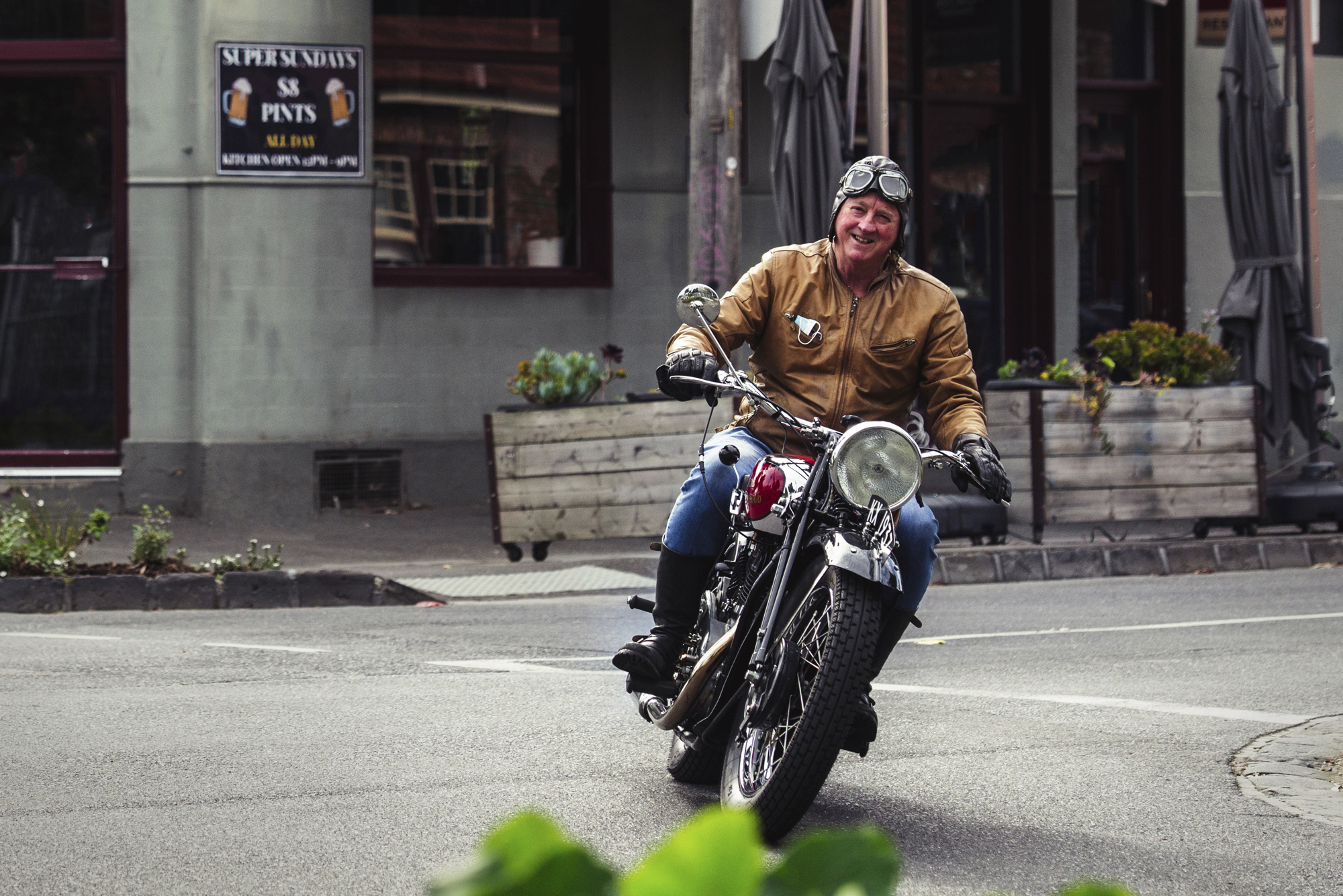
Phillip (above) reckons this has been the
machine he turns to when one of his post-war classics
spits the dummy, as it always starts and runs reliably. I
believe him.
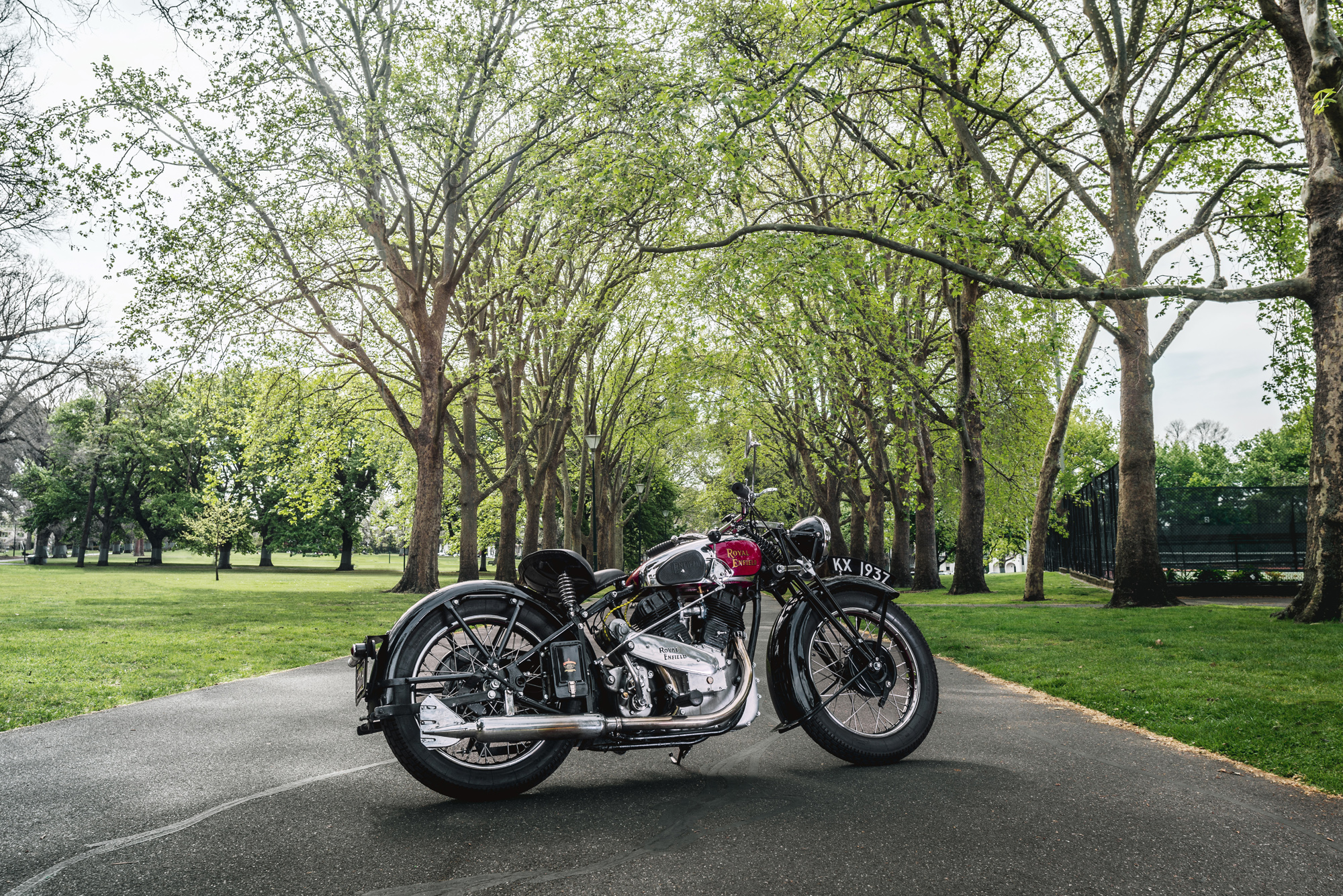
That brief experience had me thinking
this would be a really interesting alternative to a
Vincent twin, and as enjoyable.
Phillip is looking at new projects and
the KX is on the market at Au$60,000 (US$39,000,
GB£31,000). Contact the owner
by email.
***
Resources
See Royal
Enfield's 2018 homage to the KX
-------------------------------------------------
Produced by AllMoto abn 61 400 694 722
Privacy: we do not collect cookies or any other data.
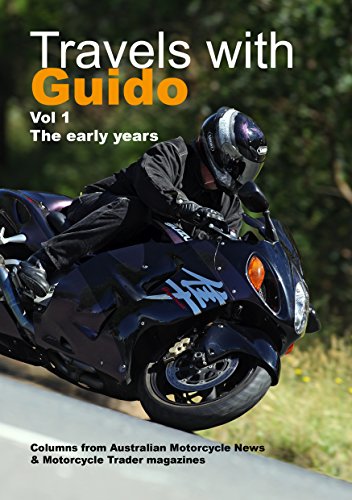
Archives
Contact




